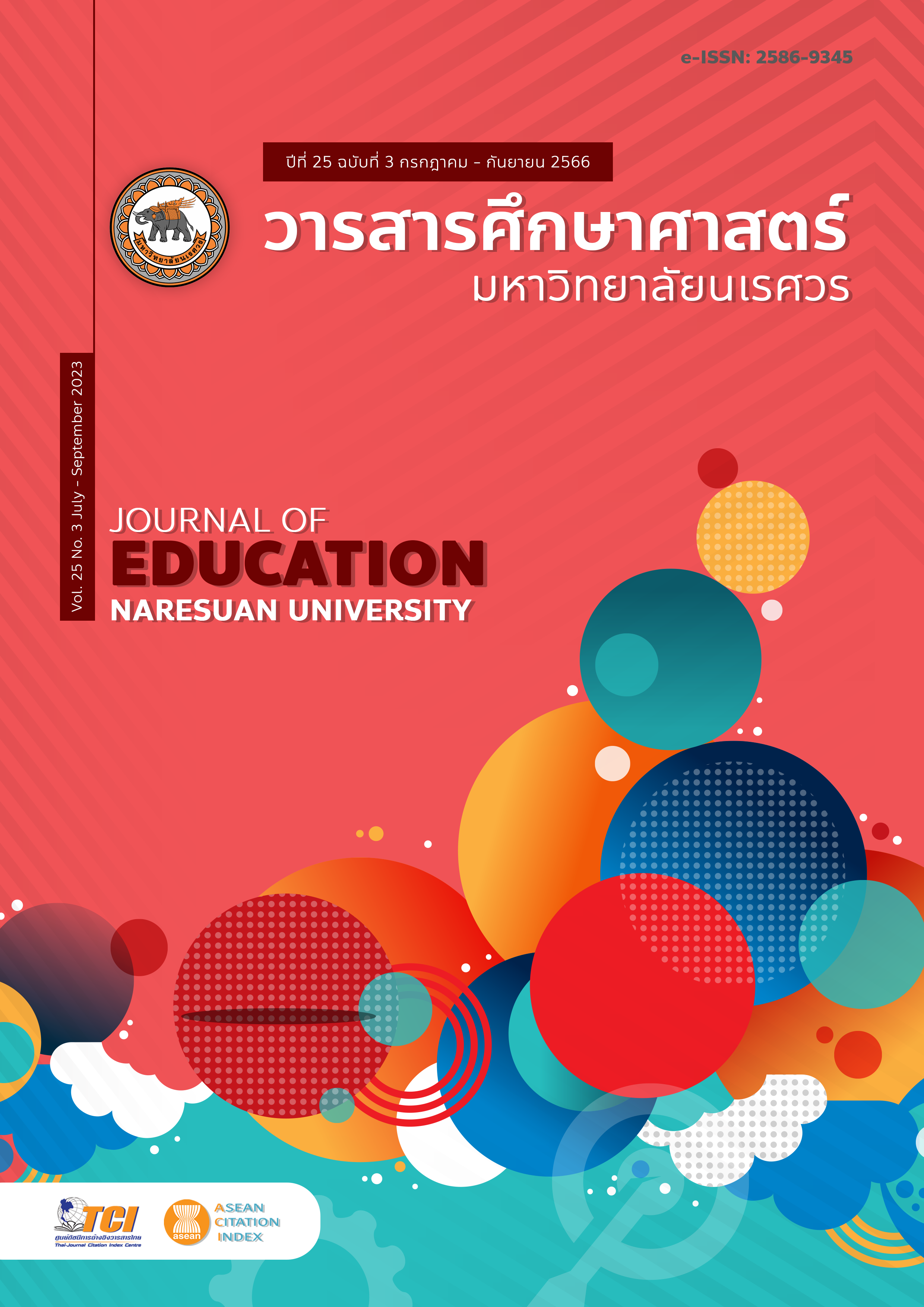THE PSYCHOSOCIAL FACTORS RELATED TO STUDENT SILENCE IN ANSWERING TEACHER QUESTIONS
Main Article Content
Abstract
The purposes of this research were to study the relationship between the psychosocial factors and student silence in answering teacher questions and to explore the key predictive factors of student silence behavior in answering teacher questions. 140 students of Bachelor of Education Program, year 1-4, 2019, obtained by stratified sampling. The record forms of silence behavior in answering teacher questions and the questionnaire were used to collect the data. The questionnaire consisted of two main parts: general data and questions about silence behavior in answering teacher questions which measured the reliability by Cronbach’s Alpha coefficient and the score of internal consistency of the instrument was 0.95. The statistics used in the analysis are Pearson correlation coefficient and Stepwise multiple regression analysis.
Results showed that: the psychosocial factor in the aspect of trained speaking skills positively and significantly affected silence behavior in answering teacher questions (Beta = 0.278, p <0.05). The psychosocial factor in the aspect of self-confidence positively and significantly affected silence behavior in answering teacher questions (Beta = 0.563, p <0.05). The independent variables of the psychosocial factors in all 5 aspects were efficient to predict and describe the dependent variable (Silence behavior in answering teacher questions) at 10.20%. It can be written in the predictive equations of a raw and a standard score as follows. = 16.104 + 5.461 X1 - 2.477 X2 + 11.718 X3 - 5.471X4 - 4.339 X5
= 0.278 X1 – 0.165 X2 + 0.563 X3 – 0.275X4 – 0.291 X5
Article Details

This work is licensed under a Creative Commons Attribution-NonCommercial-NoDerivatives 4.0 International License.
The owner of the article does not copy or violate any of its copyright. If any copyright infringement occurs or prosecution, in any case, the Editorial Board is not involved in all the rights to the owner of the article to be performed.
References
Allport, G. W. (1969). “Attitude”, in C. Machidon ed. Handbook of Social Psychology. Massachesetts: Clark University Press.
Bandura, A. (1999). Self-efficacy: The exercise of control. New York: W.H. Freeman and Company.
Bhanthumnavin, D. (2003). Multidisciplinary research studied in behavioral science. Bangkok: National Research Council of Thailand.
Boonphadung, S. (2015). Development of critical information retrieval skills via the use of ARCS Model with students in Suan Sunandha University. Journal of Education Naresuan University, 17(3), 10-20.
Chaijamrus, S. (2011). The effect of children as researchers on preschool children’s self-assurance (Master thesis). Bangkok: Srinakarinwirot University.
Cheng, X. (2000). Asian students’ reticence revisited. System, 28, 435-446.
Ditthapanya, P. (2020). Effect of problem based learning with think-pair-share technique to develop scientific problem solving ability and self-confidence of fifth grade students (Master thesis). Bangkok: Srinakarinwirot University.
Endler, N. S., & Magnusson, D. (1976). Interactional psychology and personality. New York: Halsted-Wiley
Hall, E. T. (1981). Beyond culture. Anchor books: Doubleday.
Ishii, S., Bruneau, T. (1994). Silence and silences in cross-cultural perspective: Japan and the United States. In L. A., Samovar, R. E. Porter, (Eds.), Intercultural communication: A reader (7th ed., pp. 246-251). Belmont: Thomson Wadsworth.
Maeda, J. (2017). Self-Efficacy Reduces Impediments to Classroom Discussion for International Students: Fear, Embarrassment, Social Isolation, Judgment, and Discrimination. IAFOR Journal of Education, 5(2). https://doi.org/10.22492/ije.5.2.07
Runjiang Xu & Liangguang Huang. (2010). The role of teacher in college English Classroom – From the perspective of affect. International Education Studies, 3(3), 192-194.
Skehan, P. (1991). Individual differences in second language learning. Studies in Second Language Acquisition, 13, 275-298.
Rogers, C. R., & Freiberg, J. H. (1994). Freedom to learn. New York: Pearson.
Rothman, J. (1968). Three models of community organization practice. New York: Columbia University Press.
Treffinger, D. J. (1995). Creative problem solving: Overview and educational implications. Educational Psychology Review, 7(3), 301–312.
Triandis, H. C. (1971). Attitude and attitude change. New York: Wiley.
Zhong-hua, W. (2008). Understanding class silence in China: Approach from the perspective of Intercultural study. Sino-US English Teaching, 5(4), 35-39.


